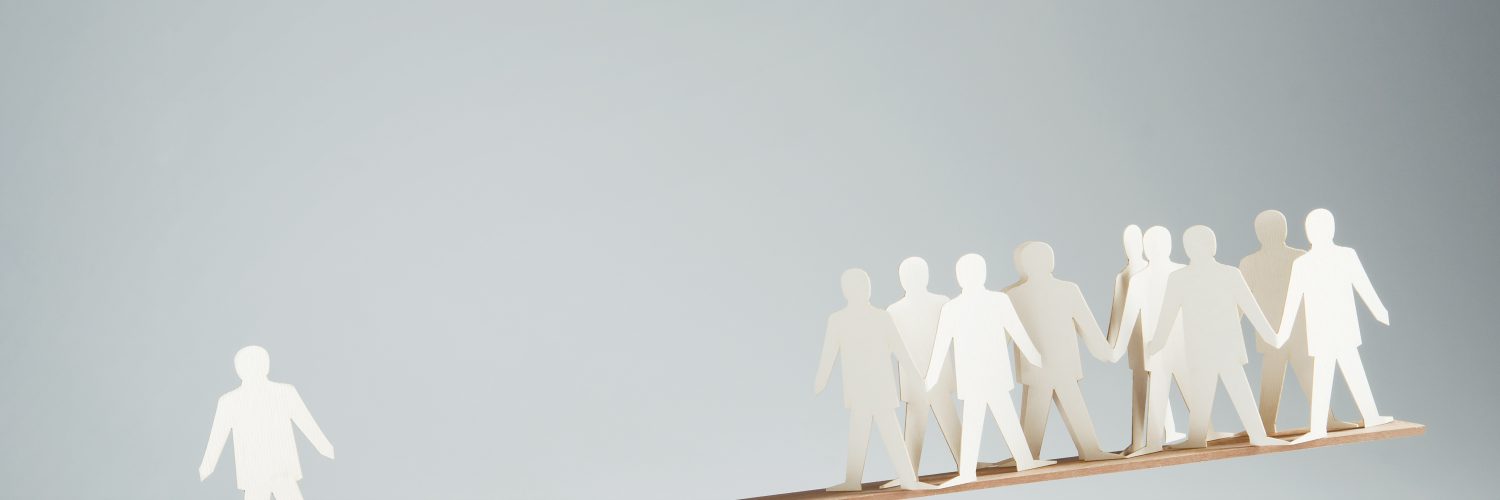Achrei-Mos 5779
“You shall observe My decrees and My judgments, which man shall carry out and live by them, I am Hashem.” (Vayikra 18:5)
R’ Yishmael, R’ Akiva and R’ Elazar ben Azarya were going on a journey and Levi haSadar and R’ Yishmael the son of R’ Elazar ben Azarya were traveling behind them. The following question was posed to them: What is the source in the Torah that we desecrate Shabbos on account of Pikuach Nefesh? (Talmud Bavli Yoma 85a-b).
The Gemara records several possibilities as to the source of the law that we desecrate Shabbos on account of Pikuach Nefesh. It concludes with the opinion of Rav Yehuda in the name of Shmuel who argued that it may be derived from the words “V’chai Bahem” – “and live by them” which imply that the performance of the Mitzvos should not be a cause of a person’s death (“V’lo Sheyamus Bahem”). The Gemara contends that this Posuk (as opposed to the alternatives proposed earlier) can even teach us that one should desecrate Shabbos in a case of Safeik (possible) Pikuach Nefesh[1].
In our essay to Parshas Vaeira we extensively discussed the concept of “Pikuach Nefesh overriding all of the Mitzvos[2] in the Torah”. We explained that the words “V’chai Bahem” do not merely teach us that a person’s life is more important than the performance of Mitzvos[3], but in fact reveal an affirmative principle that the Mitzvos of Hashem are meant to further mercy and peace in the world and help a person realize his “Kedushas Ha’Chayim”. Therefore, they never dictate that a person should give up his life, on the contrary, they insist that he guard it carefully. For this reason, all of the Mitzvos are overridden, even in a case of Safeik Pikuach Nefesh[4].
One of the most difficult aspects of the Sugya of Pikuach Nefesh is defining the extent of Safeik Pikuach Nefesh. Often it is unclear whether the danger that exists in certain situations can indeed be classified as Safeik Pikuach Nefesh and therefore warrants Chillul Shabbos or not. The Poskim[5] have ruled upon a broad spectrum of cases in this regard, attempting to define the level of danger that can be truly considered Safeik Pikuach Nefesh.
In the following paragraphs we will examine the distinction between the ordinary application of the Halachos of Pikuach Nefesh as related to individuals and how they are applied to cases related to the larger public. We will conclude with several practical Halachic rulings.
We can examine two distinct cases where the consideration of danger to the public affects the application of the Halachos of Safeik Pikuach Nefesh.
- An event in which there is a low level of danger to the general public. This level of danger, in the case of an individual, would not be considered Pikuach Nefesh. However, in the case of a Tzibbur, the danger might be considered Pikuach Nefesh.
- An event in which only individual persons are in danger, but the area in which that danger is found is a public domain. This means that there is the potential of danger to the Tzibbur.
Let us illustrate these examples with the following two cases:
Two Towns, One Spring
The Gemara in Nedarim (80b) cites a Tosefta (Bava Metzia 11) that discusses two neighboring towns, one of which has the rights to the waters of a nearby spring. The Tosefta discusses the degree to which the town with rights to the spring must allow the other town access to it:
[In the case of] a spring belonging to the residents of a city, if the water was needed for their own lives (i.e., the city’s residents required the spring for drinking water), and it was also needed for the lives of others, their own lives take precedence over the lives of others…their own animals and also for the animals of others, their own animals take precedence…their own laundry and also for the laundry of others, their own laundry takes precedence. [However, if the spring water was needed for] the lives of others and their own laundry, the lives of others take precedence over their own laundry. R’ Yose says their own laundry takes precedence over the lives of the others.The Tanna Kamma holds that where the needs of the town with rights to the spring and the needs of the neighboring town are equal then the first town’s needs take precedence. However, if the neighboring town needs water to drink and the first town only needs it for laundering their clothes, then the neighboring town’s needs take precedence. R’ Yose disagrees and holds that even in this situation the first town’s needs take precedence.
According to the Sheiltos (147) (and Beis Shmuel E.H. 80:15) the Halacha is in accordance with R’ Yose. The Maharsham (Shu”t 2:210) also understands this to be the opinion of the Rambam, and the same is implied by the Beis Efraim (E.H. 66). The Achiezer (2:23:2), however, holds that the Halacha follows the Chachamim[6].
The words of the Tosefta imply that R’ Yose’s opinion is that the people of the first town have the right to use the water of the spring for laundering clothes even though the other town will thereby be left with nothing to drink! However, the Achiezer (ibid.) argues that that simply cannot be the case. R’ Yose would certainly not countenance endangering the life of the people of the other town just so the first town may launder their clothes. Rather, the Tosefta must be speaking of a case where the other town would be able to procure water from elsewhere, just at great inconvenience.
The Chazon Yechezkel (Bava Metzia ibid.) also makes a similar argument, contending that the Tosefta speaks of a case where the other town has just enough water to drink but does not have water in abundance. R’ Yose therefore held that it was permitted for the members of the first town to use the water of the spring for laundering clothes.
However, the Ran (Nedarim ibid.) implies otherwise. When explaining the Tosefta, the Ran invokes the famous rule of the Gemara in Bava Metzia (62a) “Chayecha Kodmin” – “your life takes precedence” (which is learnt from the Posuk “v’Chei Achicha Imach”) explaining as follows:
Where the people of the first town need the water for drinking, all agree that “Chayei’hen Kodmin” – “their lives take precedence” and they have no obligation to offer it to the other town. But where they only need it to launder their clothes, the Tanna Kamma holds that their needs cannot be considered “Chayey Nefesh” and one therefore cannot invoke the rule of “Chayecha Kodmin”. R’ Yose argues and even considers laundering clothes as “Chayey Nefesh”. Therefore their needs still take precedence.
Simply understood, the Ran’s explanation of the Tosefta implies that the people of the first town may use the water for laundering their clothes (which only serves to remove their Tza’ar) even though this might endanger the lives of the people of the second town. This would be the simple application of the rule of “Chayecha Kodmin”.
The same is implied by the Beis Shmuel (ibid.) who invokes the Machlokes between R’ Yose and the Chachamim when ruling on a case of a woman who is nursing and who needs a certain type of food to rid her of some pain that she has. The food in question will endanger the child whom she is nursing. According to the Beis Shmuel, R’ Yose would allow her to eat it because “Chayecha Kodmin”. Clearly, in the view of the Beis Shmuel, R’ Yose holds that one may endanger the life of another person to save oneself from Tza’ar[7].
However, this conclusion is difficult to understand. If two people were to be traveling together, one of whom has a little water that he intends to use to launder his clothes and the other is dying of thirst, would R’ Yose really say that the first man may launder his clothes and not offer it to his dehydrated, thirsty friend?
According to the conclusion of the Sugya, R’ Yose in fact is speaking about the type of laundering that would endanger the people of the town if it were not performed. He did not mean to rule that the first town’s Tza’ar overrides the second town’s Pikuach Nefesh[8]. Nevertheless, it is reasonable to assume that avoiding laundering the clothes would be unlikely to present an imminent danger to life. Certainly, the risk to the people in the second town who have nothing to drink would be a greater danger than the risk to the people in the first town if they were unable to wash their clothing!
The Netziv (Ha’amek Sha’ala, Sheilta 147) explains that if the people in the first town would not launder their clothes they would be in a state of Safeik Pikuach Nefesh. Therefore, according to R’ Yose[9], they may invoke the rule of Chayecha Kodmin despite the fact that the people of the second town are in a state of definite Pikuach Nefesh. While in general it is Middas Chassidus (a pious trait) to risk one’s life in order to save another person, in this case the people of the first town have no right to place the young children of their town at risk by attempting to save the people of the second town from dying of thirst.
One could suggest a similar approach to the Netziv, but along different lines: Perhaps R’ Yose attaches great significance to any danger posed to the Tzibbur. Something that would be considered a low level of danger in the case of an individual may be considered actual Sakanas Nefashos when it comes to the Tzibbur[10]. For this reason, R’ Yose ruled, that the people of the first town may launder their clothes (because of the element of communal Safeik Pikuach Nefesh that would be a concern if they would not wash them), even at the expense of the clear Pikuach Nefesh of the second town
Red Hot Metal in the Reshus haRabbim
There is another instance where Chaza”l seem to attach greater significance to dangers posed to the public than to an individual in the Gemara in Shabbos (42a). Shmuel rules[11] that one may extinguish a piece of burning metal (a Gacheles) on Shabbos if it is lying in the public domain and someone might be injured or damaged by it.
Rashi (and other Rishonim) explains that the reason that one may extinguish the Gacheles to save the public from damage is because doing so is only an Issur d’Rabbanan[12]. However, the Rashba and the Ran cite the Ba’al Halachos Gedolos (the Beha”g) appears to hold that doing so is in fact an Issur d’Oraisa and is nevertheless permitted because of the danger to the public.
The Ran asks – how can the Beha”g understand that Shmuel would permit an Issur d’Oraisa in the absence of actual Sakonas Nefashos? He answers that “any danger to the public is considered like Sakanos Nefashos”.
From the words of the Ran it seems that we relate to danger posed to the public differently than to that posed to an individual. There may be cases where, objectively speaking, no Sakonas Nefashos is involved but if the public may be affected, we demand a level of vigilance that renders even a small danger as Sakonas Nefashos, so much so that we will even violate an Issur d’Oraisa because of it[13].
We might also suggest that this is the basis of R’ Yose in the first case. Although not laundering clothes would put the people of the town in some sort of Sakana, it would not usually be considered actual Sakanas Nefashos. However, since we’re dealing with an entire Tzibbur, it is treated as actual Sakanas Nefashos. In fact, in R’ Yose’s case, the concern relates to the public even more than it does in the case of the Gacheles. The danger from the Gacheles was unlikely to affect more than a handful of people even in the worst-case scenario, whereas not laundering clothes affects the entire town.
In a similar vein the Rama (O.C. 334:26) rules[14] regarding an outbreak of a fire on Shabbos, that nowadays as we live amongst the non-Jews and there is even greater Sakanas Nefashos if we would refrain from extinguishing the fire[15], we must extinguish any fire ourselves and not delay to find a non-Jew to do it for us. While we should look at each situation individually and not extinguish the fire if there is clearly no danger, if there is any doubt we should extinguish it[16]. The Mishna Berurah (ad. loc. 73) in the name of the Elya Rabbah notes that this is the source to extinguish fires on Shabbos in all circumstances. Since there will often be an elderly or sick person in the town who would not be able to escape the flames, every fire presents a possible Sakanas Nefashos and may therefore be extinguished on Shabbos.
Here again, the level of Pikuach Nefesh would surely not be enough to warrant the desecration of Shabbos if only an individual was involved, but since it relates to the public, it is considered a genuine Pikuach Nefesh.
What practical Halachos can be deduced from all of this?
The most important questions related to this topic is the observance of Shabbos in hospitals. As any observant doctor will know, keeping Shabbos while working in a hospital can be very complicated indeed. Over time, the Poskim have been asked numerous questions relating to this topic and have often ruled leniently, with different conditions.
It would appear that the attitude of the Poskim towards these questions stems somewhat from the considerations outlined above – that we view potential danger to the Tzibbur as more serious than potential danger to a single individual.
An example of this is the age-old question of whether medical staff may make notes on Shabbos regarding patient information, procedures performed, or medications administered. Over the years, certain measures were taken by observant doctors, to lessen the gravity of the Issur of writing on Shabbos, such as using ‘disappearing ink’ or other Shinuyim (changes from normal practice – e.g. writing with one’s non-dominant hand) that would turn it into an Issur d’Rabbanan (k’lachar yad). In recent years almost all hospitals have transitioned to paperless electronic health records. What would constitute a “Shinuy” when typing on a computer?
.
Harav haGaon Rav Asher Weiss Shlit”a wrote the following Teshuva to our dear friend Dr. Ari Weintraub with regard to this question:
“Since in the hospital in which he works, the computer has taken the place of ordinary writing, and the rules of the hospital dictate that all procedures and medications are accurately recorded, what is permitted and what is forbidden to record on Shabbos?”
“I have already written in many places, that the law of Pikuach Nefesh of the public is different than the law of Pikuach Nefesh of the individual. Even though in the case of an individual not every far-fetched Sakanah is considered Pikuach Nefesh, in the case of a hospital it is clear that there is an importance and necessity to record every medical procedure and administration of medication, because in time, the lack of accurate records will bring about a death that would have been possible to avoid. Therefore, one should follow the hospital policies [for documentation] precisely.”
“However, since we speak of a somewhat far-fetched Pikuach Nefesh, or perhaps a very far-fetched Pikuach Nefesh, one should become accustomed to typing on the computer with a Shinuy, in order to avoid an actual Issur d’Oraisa. Any Shinuy which causes difficulty in the performance of an act, renders it as “Ki’l’achar Yad”, and is only an Issur d’Rabbanan as a result.”
“As far as typing on the computer is concerned, using the middle section of the finger and not the tip is considered a Shinuy. Similarly, typing while wearing a thimble on one’s finger, is also considered a Shinuy.”
“Any doctor or nurse who fears Heaven should ensure that they type with a Shinuy to avoid an Issur d’Oraisa. Once the Issur is only d’Rabbanan, one may be lenient [even] in the case of a far-fetched possible Pikuach Nefesh.”
This Teshuva of Rav Weiss Shlit”a clearly outlines the idea that we have discussed. If a doctor would be dealing with an individual private patient outside of the hospital, he could rely on remembering the details of the medical care he provided until after Shabbos and recording it then. However, in the case of the hospital system and entire patient community, such practice could potentially endanger lives. Therefore, a doctor should record the information on Shabbos. Nevertheless, it is important to perform the task in a way that minimizes Chillul Shabbos, seeing as there is no outright or direct Pikuach Nefesh involved.
[1] Rashi explains that the words in the Posuk “which man shall carry out (and live by them)” imply that through the performance of Mitzvos a person should certainly live and that fulfilling a Mitzvah should never lead to even a Safeik Pikuach Nefesh.
[2] Aside from the three Aveyros Chamuros.
[3] In the sense that other Halachic rules establish priorities in Mitzvah observance (e.g. “Assei Docheh Lo Sa’aseh” (where the performance of the Assei is more important than avoiding the violation of the Lo Sa’aseh), or the law that one is not obligated to use more than one fifth of his assets in order to perform a Mitzvah).
[4] See the aforementioned essay for further elaboration on this point. All of our essays to date may be found on our website – https://www.medicalhalacha.org/torah-archive.
[5] See for example Shu”t Noda Biyehuda (210) and Shu”t R’ Akiva Eiger (60) and many others. Relating to Refua, see Tzitz Eliezer (8:15:7).
[6] See also the essay of Reb Ovadia Yosef zt”l in “Diney Yisrael” (7 – 5736 – p32) who explains that the Halacha follows R’ Yose.
[7] See Rambam and Ra’avad (Ishus 21:11), Maggid Mishna and Kessef Mishna ibid., Tur and Beis Yosef E.H. 80, Shulchan Aruch (ad. loc. 12), Chelkas Mechokek (ad. loc. 22) upon which the Beis Shmuel bases his conclusion. See also B’eir Heiteiv ad. loc. 14)
[8] The B’eir Heiteiv (ibid.) therefore asks how the Beis Shmuel could invoke the Machlokes of R’ Yose and the Chachamim when ruling on the case of the nursing mother where there is only Tza’ar to the mother and no actual danger.
[9] The Netziv writes that the Machlokes of the Tanna Kamma and R’ Yose is the same as the famous Machlokes of R’ Akiva and ben Petura (Bava Metzia 62a) regarding two people traveling in the desert with only one jug of water. Ben Petura rules that they should split the water between themselves even though there’s a possibility that they will both die but R’ Akiva argues and says “v’Chei Achicha Imach – Chayecha Kodmin” so the owner of the jug should keep all of the water to himself and not put himself at risk of dying even though his friend will certainly die without water. In our case of two towns, R’ Yose holds like R’ Akiva and rules that the Safeik Pikuach Nefesh that would arise from not laundering the clothes takes precedence even over the drinking needs of the other town. The Netziv explains that this is why the Poskim do not quote the Tosefta (discussing the two towns) as they have already codified the ruling of Chayecha Kodmin and R’ Yose’s psak follows logically. On the other hand, the Ran (above) who quotes the Din of Chayecha Kodmin, does not necessarily hold that R’ Akiva would agree with R’ Yose in our case; it is possible that, according to the Ran, R’ Akiva’s ruling was only in the case that there was an actual risk of danger (dehydration). R’ Yose expands that ruling to the case of two towns even though there is no tangible risk of illness from not washing their clothes but it’s not clear that R’ Akiva would agree.
[10] This approach is clearly not taken by the Beis Shmuel (ibid.) who invoked the opinion of R’ Yose even in a case of Pikuach Nefesh of an individual (the nursing baby). See the essay by Reb Shlomo Dichovsky zt”l – Torah She’ba’al Peh 31, p40 onwards.
[11] The Rambam (Shabbos 12:2) and Shulchan Aruch (O.C. 334:27) rule accordingly.
[12] The leniency is therefore limited in scope to Rabbinic prohibitions only.
[13] See also Shu”t Chassam Sofer (C.M. end of 177)
[14] In the name of ‘Rishonim and Acharonim’.
[15] See Mishna Berurah ad. loc.
[16] Terumas Ha’Deshen 58 and Hagahos Ashri in the name of Or Zarua)














Add comment